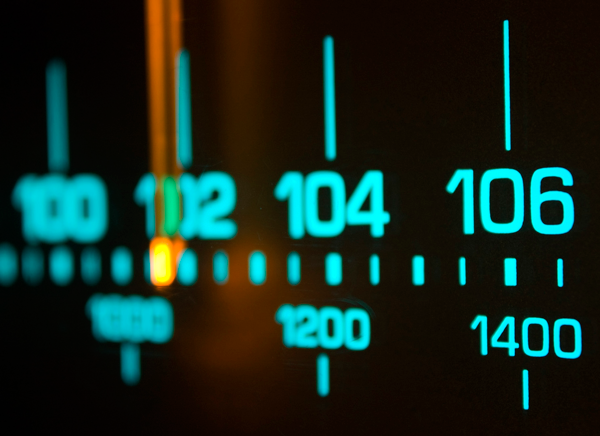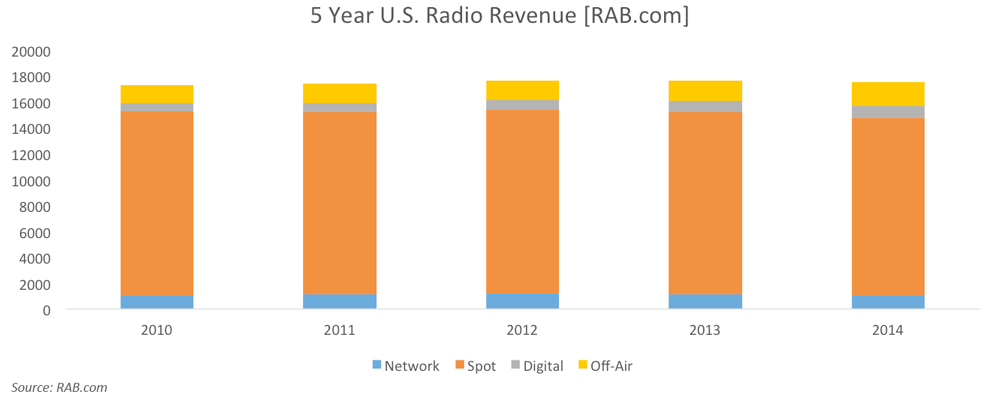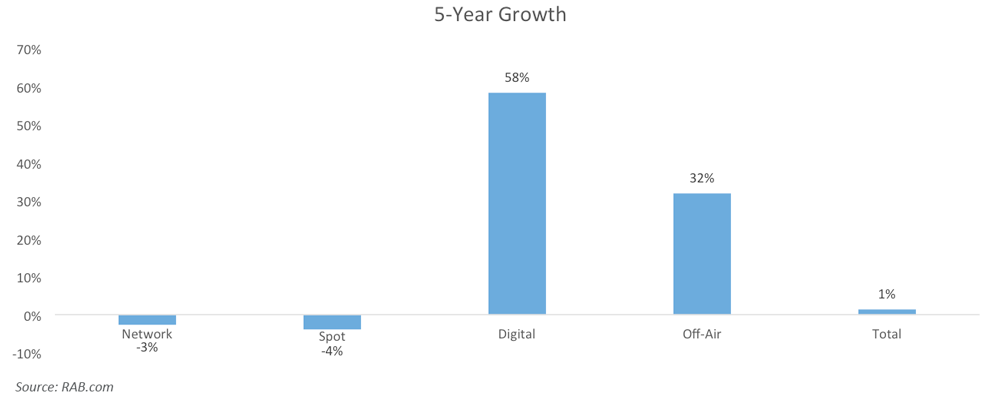 Over the past couple of months, Inside Radio has published a number of articles related to digital channels and specifically about bringing broadcast radio to the Internet. One recent article was titled, “Stop Giving Your Digital Away! It’s a Premium Asset, Not an Incentive.”
Over the past couple of months, Inside Radio has published a number of articles related to digital channels and specifically about bringing broadcast radio to the Internet. One recent article was titled, “Stop Giving Your Digital Away! It’s a Premium Asset, Not an Incentive.”
These are very direct words for broadcast radio. The common industry narrative has been more along the lines of radio is immune to the digital disruption experienced first by print media and more recently by television. Broadcast radio has had the luxury of extremely high audience reach and that scale can mask underlying changes in consumer behavior. When 93% of the U.S. population claim to listen to broadcast radio weekly and that number has changed little in recent years, industry professionals often feel comfortable ignoring the impact of Internet radio, at least in public discussions. However, you could view this as a growing problem or recognize it as an opportunity.
Broadcast Radio Audiences Decrease Time While Internet Radio Grows
Data from the Radio Advertising Bureau show that traditional sources of broadcast radio revenue are contracting and industry revenue is essentially flat only because of growing digital and off-air activities.


Even with the strength in digital and off-air categories, broadcast radio revenue trails inflation which indicates a net contraction on an annual basis. If broadcast radio revenue had simply matched U.S. inflation during the 2010-14 period, total revenue would have risen to $18.768 billion which is $1.259 billion more than the actual 2014 revenue. That revenue level put the industry 6.7% below a revenue trend matching inflation growth. This correlates with a 7.4% time spent listening decline for broadcast radio over the past five years.
During this same period, eMarketer data indicates that Internet radio consumption has quickly risen to about one-third of all radio-style listening. Consumers are adopting Internet radio for a variety of reasons, but the trend is unmistakable. While “digital” growth in radio has risen to $889 million in revenue annually, the advertising revenue of Internet radio is expected to reach $2.75 billion in 2015. Digital audio is the destination for radio revenue and audience growth. The key point of the recent Inside Radio articles is that this revenue is available to broadcast radio stations with strong digital strategies.
The Opportunity for Broadcasters
“Advertisers and radio stations are beginning to view all radio (traditional, digital, and satellite) as a single budget item — audio budget vs. radio budget [emphasis original] — to meet consumers where they are, which currently is on digital and online.” This comment appeared in the Inside Radio article from October, “How Online Radio Is Helping Stations Grow.”
The upside of this change from a budget perspective is advertisers are increasingly open to considering the digital radio ad products as part of a buy that includes broadcast. The downside is that this opens the door for Internet-only radio and audio streaming services to erode traditional radio ad budgets. Whereas online audio advertising may have previously come from digital budgets and had little direct impact on crowding out broadcast radio advertising, the lines are now erased.
Many traditional broadcasters recognize these facts and have invested in digital to bring their audio content assets online. iHeartMedia, Entercom, and NPR are notable examples of radio broadcasters with robust digital strategies centered around mobile apps. And, they are not alone. Mobile technology developer and XAPP partner jacapps has now helped over 300 broadcasters develop audiences through mobile apps that both live stream radio content and make it available in segments on-demand.
Five Steps for Broadcasters to Leverage Digital
Taking advantage of the opportunity starts with the ideas expressed in the Inside Radio articles that digital is a premium asset and a way to expand audience listening. The expansion may come through more listeners and more time listening, both of which increase ad inventory and opportunities to drive revenue.
The strategy for broadcasters is straightforward.
- Get online.
- Invest in delivering a great digital audio consumption experience on mobile devices [simple simulcast no longer makes the grade].
- Leverage the two-way communication capabilities of digital to deliver great content interaction experiences that engage listeners with local talent and advertisers.
- Promote digital properties to broadcast audiences so they know you are an option when they turn on their smartphone.
- Cross-sell digital and broadcast assets to provide advertises with an integrated campaign to reach your audience.
Radio broadcasters have both experience and assets to leverage when competing for digital audio advertising spend. However, viewing digital as an incentive to improve broadcast spot sell through today ignores the value of digital and undermines its long-term value. Treating digital audio as a premium asset can reignite radio revenue growth.
Learn more about XAPPmedia’s partnership with jacapps that helps broadcasters monetize mobile audiences here.
Related Posts
4 Charts Show Radio’s Future is on Mobile
On-demand Audio and Future of Radio Time Shifting
Nielsen Data Confirm Listener Time Shift to Ad-Supported Online Audio
